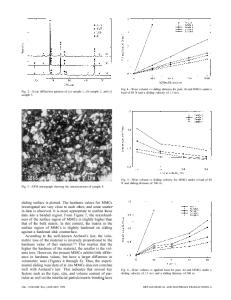Effects of Basicity and Al 2 O 3 Content on the Chemistry of Phases in Iron Ore Sinter Containing ZnO
- PDF / 4,932,518 Bytes
- 12 Pages / 593.972 x 792 pts Page_size
- 67 Downloads / 285 Views
RODUCTION
RECYCLING by-products generated from the integrated iron- and steelmaking industry has drawn attention from the vantage point of environmental and economic issues. Charging of iron-containing industrial by-products, such as scrap and dust in the blast furnace (BF), is useful to reduce CO2 emission from the ironmaking process as well as to increase economic competency.[1–4] For example, BF dust can be considered as a source of iron in BF operation, because it contains 15 to 40 wt pct of Fe. Recycling of BF dust has been generally applied to the sintering process.[5–7] BF dust is mostly composed of carbon, CaO, SiO2, and iron oxides, but it contains some minor constituents such as Al2O3, MgO, ZnO, and so on. Among them, many researchers pointed out that zinc in iron ore sinter may
JUNWOO PARK, RAMARAGHAVULU RAJAVARAM, IN-KOOK SUH, and JOONHO LEE are with the Department of Materials Science and Engineering, Korea University, Seoul 02841, Republic of Korea. Contact email: [email protected] JIWON JEON and SANGHAN SON are with Technical Research Laboratories, POSCO, 6267, Donghaean-ro, Nam-gu, Pohang-si, Gyeongsangbukdo, 37859, Republic of Korea. Manuscript submitted March 24, 2020.
METALLURGICAL AND MATERIALS TRANSACTIONS B
cause accumulation of ZnO in the iron ore sinter and wear of the refractory material during the BF operation.[8–10] When iron ore sinter containing Zn is charged in the BF, or pulverized coal containing Zn is injected into the BF through tuyere nozzles, Zn vapor is generated in the relatively lower part of the BF. While traveling with the gas stream to the upper part of the BF, Zn vapor is oxidized and condensed in the charged burdens or the refractory materials. As this sequence is repeated, ZnO is accumulated in the iron ore sinter and the refractory materials.[8,9] As ZnO content increases in the refractory material, damage of the refractory material may occur.[10] If we consider the maximum use of various dust (not only BF dust but also basic oxygen furnace dust[11,12] and electric arc furnace dust[13,14]), it is important to know the chemistry of iron ore sinter containing ZnO. On the other hand, phases in the iron ore sinter are complex and mosaic structure is frequently observed. For the quantitative phase analysis of the iron ore sinter, the image analysis technique on the cross-sectional image has been generally applied[15,16] and the chemical composition of each phase has been determined using a scanning electron microscope-energy dispersive X-ray analyzer (SEM-EDX). However, the cross-sectional image does not provide adequate volume fractions of the phases so that an alternative technique for quantitative phase analysis should be considered. Hamilton
et al. suggested that Rietveld analysis of the X-ray diffraction (XRD) patterns of the bulk sample would be the most promising method for the quantitative phase analysis,[17] and several researchers have adopted this method for the quantitative phase analysis.[18–24] For example, Webster et al. investigated the phase transitio
Data Loading...











